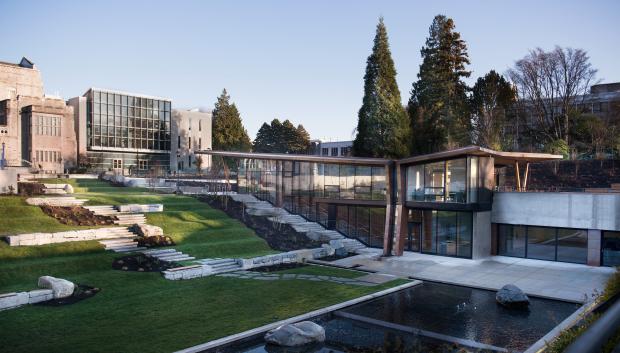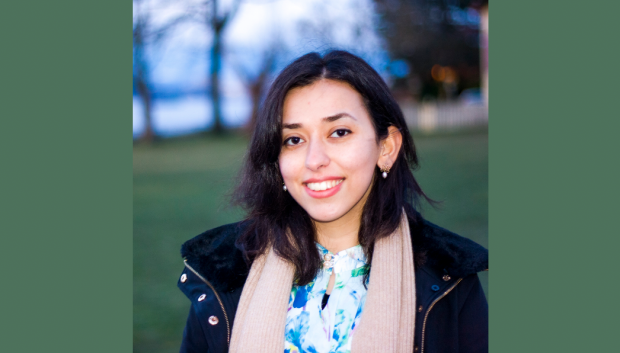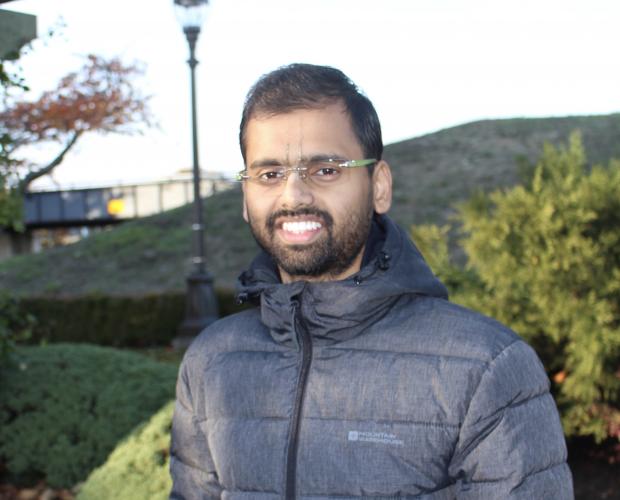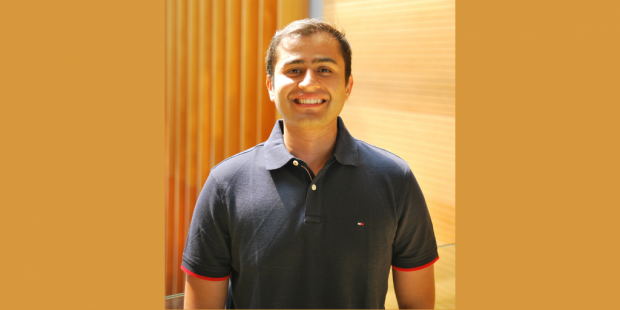“I am a strong believer that you can make a difference in the world at the local level. Opportunities for positive change exist all around us.”
From the start of my degree, I wanted to get involved and try to help my community. Working on projects and initiatives is my approach to understanding more about who I am, and developing skills that will help me later on.
I was involved in the Engineering Undergraduate Society (EUS) throughout my entire degree, first as Video Director — making videos highlighting events happening in the engineering community every week, and later as VP Academic — one of seven executives of the society. I also served as the Applied Science Student Senator, sitting on the UBC Senate. My involvement at the EUS and Senate helped me find a project that would be my focus for most of my degree. Over the next three years, I worked with faculty members and staff to determine factors influencing student wellbeing. I presented my findings at the Canadian Engineering Education Conference.
In my fourth year, I was selected for a research internship, a dream role, at the École Polytechnique Fédérale de Lausanne (EPFL) in Switzerland. During the internship, I worked for a laboratory in the field of human-computer interaction.
I plan on pursuing a career in software development, focused on web development and data visualization.
WHY DID YOU CHOOSE TO GO INTO YOUR FIELD OF STUDY AT UBC?
I always shared a passion for tinkering with computers and various electronic devices around my house. I was confident in my choice to pursue a career in software development. Before joining UBC, I was not sure if I should go into computer engineering or computer science. I had the chance to attend the UBC Engineering Open House before applying to UBC. There, I saw a strong student community with people sharing a genuine passion for what they do. This convinced me that engineering at UBC was for me as it offered a program in a field I was interested in, and I immediately saw myself being a part of its community.
WHAT HAS MADE YOUR TIME AT UBC MEMORABLE?
The variety of experiences I had at UBC was what made my time at UBC memorable. Both in class, outside of class, and through internships, I had the chance to partake in a wide variety of projects, initiatives and events. From helping run EUS events such as a dog therapy event to a chariot race during E-Week, to attending a graduation ceremony as a student senator, to publishing a paper at a scientific conference, to going on a hike in the Swiss alps with friends during my internship in Switzerland. I am extremely grateful for all these opportunities to do a wide variety of things during these last five years.
WHAT HAS BEEN YOUR MOST VALUABLE NON-ACADEMIC EXPERIENCE STUDYING AT UBC?
My work as the Student Wellbeing Coordinator for the Faculty of Applied Science has been my most valuable experience studying at UBC.
TELL US ABOUT YOUR EXPERIENCE IN YOUR PROGRAM. WHAT HAVE YOU LEARNED THAT IS MOST VALUABLE?
The most valuable thing I learned while at UBC is the importance of having an interdisciplinary skillset. Today’s engineering solutions require an understanding of their non-technical requirements as much as their technical ones. The many projects we have to work on always require us to think beyond technical aspects. Understanding how humans interact with our solutions, the potential environmental and business impact of an approach are important considerations for the success of any project. I came to realize this during my first two internships. I was confused at first why certain decisions were being made, but I quickly realized that there was much more to consider when making engineering decisions beyond just the technical aspect.
HOW ARE YOU APPLYING THE SKILLS YOU LEARNED THROUGH YOUR STUDIES AT UBC?
An important skill I learned while at UBC is learning how to balance your time and knowing your limits. Engineering is difficult, particularly due to the high course load of the program. Many times, I placed myself in a situation where I worked too hard for too long. In my fourth year, I began to realize the importance of taking breaks and learning to stop. The important thing is to make sure to give yourself time to see friends, binge on a new TV show, or go out for walks. After taking on these habits, I began to feel more rested. Although a non-academic skill, I am continuing to actively consider my time today, making sure I don’t overwork myself on any project.
WHAT ADVICE WOULD YOU GIVE A STUDENT ENTERING YOUR DEGREE PROGRAM?
I would give two pieces of advice that perhaps contradict one another, but I see as particularly relevant given the move to online classes. One: get out there and seek new experiences. University is a truly unique environment where you can discover what interests you and find experiences that will help you beyond graduation. Whether classes are online or they resume in-person courses, make sure to seek opportunities and get involved on projects and initiatives. Two: remember to take breaks. Beyond school and extracurriculars, my university experience was shaped by the friends I made and the trips and hangouts we had over the years. Sometimes, we forget to take time to nurture these relationships. And now that classes are online for the first semester, we must all be proactive in taking some time off.
HOW DO YOU FEEL YOUR DEGREE HAS BENEFITTED YOU COMPARED TO A DIFFERENT FIELD OF STUDY?
I think engineering is an interesting field for the breadth of knowledge it covers compared to other fields of study. It requires a strong foundation in the sciences but also teaches how to apply this scientific knowledge to real-world projects. As an engineering student, you develop a good appreciation of the impact a particular solution may have on the people and environment. Through a lot of hands-on work, you learn how to work with others, prototype and test your ideas and manage a project to completion.
WHERE DO YOU FIND YOUR INSPIRATION?
I draw my inspiration from addressing big and small problems around me. I’ve found that the process of looking for a solution to problems takes me on a path of learning and discovery. Even a small question can be an interesting opportunity to learn new things and can lead to a significant outcome. I’ll usually keep a mental note of challenges I encounter during my day to day activities and dedicate some time each week to experiment with a few ideas. While I do not expect anything concrete to come out of these brainstorming sessions, I always manage to learn something new, or better, find new questions to ask about the problem at hand.
WHAT ARE YOUR IMMEDIATE AND/OR LONG-TERM PLANS FOR THE FUTURE?
My immediate plans are to begin working as a web developer and to eventually pursue a master’s in human-computer interaction. My goal is to create a career where I can continue to learn and experiment with ideas regularly. In the long-term, I plan on going back to Europe to reconnect with my roots. I am originally from France and always wanted to return to live a part of my career there.
WHAT ARE YOUR FUTURE PLANS TO MAKE A DIFFERENCE IN OUR WORLD?
I am a strong believer that you can make a difference in the world at the local level. Opportunities for positive change exist all around us. I want to continue to improve my skills in software development and user experience. At the same time, I want to maintain a lifestyle where I can jump onto new opportunities to bring change in my community. I think this is my way for me to bring a difference in our world.
Read the original article at https://apsc.ubc.ca/spotlight/quentin-golsteyn



